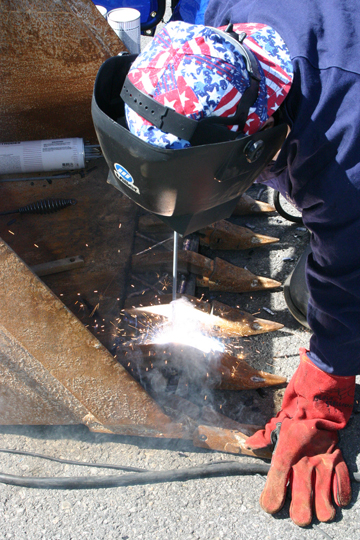Is Hard Surfacing a Better Option than Replacement?
When it comes to saving time and money on equipment maintenance and repair, hard surfacing is an option you may want to consider. During this welding process, you use a hard-surfacing filler metal (a stick electrode or flux-cored wire, usually) to add specific wear properties and dimensions to your new or old equipment.
The benefits of hard surfacing are threefold. First, it minimizes downtime to replace worn or broken components (especially considering that hard-surfaced parts can last up to 300 percent longer than non-surfaced ones). Secondly, it reduces spare parts inventory by reducing the amount of replacements needed. Finally, it saves money. On older equipment, in particular, hard surfacing costs 25 to 75 percent less than replacing worn parts.
There are two main types of hard surfacing: build-up and overlay. During the build-up process, you add layers of welds to return worn equipment to its original dimensions. Overlay refers to the process of adding a layer of welds in one of various patterns (e.g., dot, stringer, waffle, etc.) as added protection against impact or abrasion. In some cases, a combination of build-up and overlay is desirable. Typically, carbon or low alloy steels are the most often hard-surfaced materials, but pre- or post-heat treatment or stress relieving may be required on these parts to prevent cracking, particularly if the equipment has a high carbon or alloy content. The same holds true when hard surfacing thicker sections of equipment.
When deciding which type of hard surfacing technique is best for a given piece of equipment, consider the type of wear that your equipment regularly encounters. Abrasion and impact wear are the most common types.
There are three main types of abrasion, each of which has specific filler metals that provide the best protection against them. The first type, low-stress scratching, occurs as scouring action slowly wears away the base material of your equipment. The best protection against this wear is to hard surface with carbide or chrome-carbide filler metals. For a more severe type of abrasion, high-stress grinding — a type of wear that occurs from repeated grinding and crushing — filler metals that contain austenitic manganese, martensitic irons or titanium carbides are best. Finally, to protect against gouging abrasion, the most severe type caused by large rocks pressing and creating grooves on the material, use a filler metal with high carbide alloys and austenitic manganese as protection.
Hard surfacing as protection against impact wear is also common, particularly on impact hammers or bars and crusher rolls. An austenitic manganese steel filler metal is a good choice in this situation, as it offers reliable work-hardening characteristics to protect against compressive loads and high mechanical stress.
Other types of wear that can occur on equipment include adhesive (metal-to-metal), high-temperature and corrosive wear.
Depending on the type of wear your equipment encounters, you may use one of several types of hard-surfacing patterns, including:
1. Waffle or herringbone: These patterns offer good protection against abrasive wear caused by small-grained aggregates, including sand, dirt or gravel.
2. Dot: This pattern provides resistance against low-impact, high-abrasive wear.
3. Stringer: This pattern provides good protection against abrasion but requires less filler metal than a waffle or herringbone pattern.
For any hard-surfacing pattern or application, always clean the part of dirt, rust, oil or other debris prior to beginning the welding process. Also, if in doubt of which pattern or filler metal you should use for your hard surfacing application, consult a trusted welding distributor or filler metal manufacturer for recommendations. These resources can also be of great help should you have more complex types of wear to address with hard surfacing, as well.



